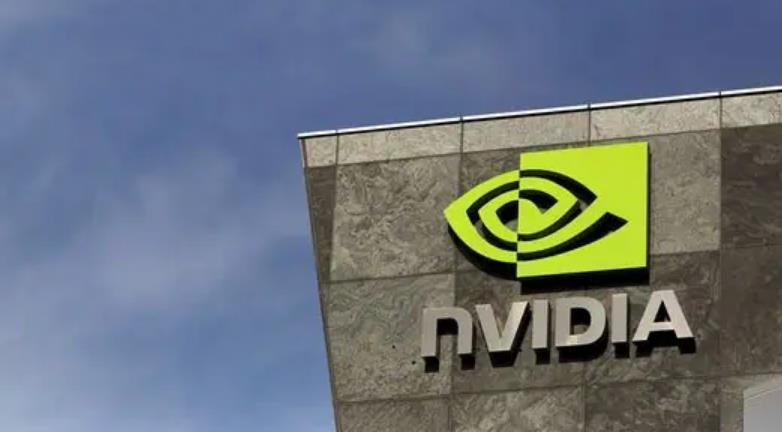Nvidia, the leading chipmaker in the world of gaming and artificial intelligence (AI), has become the first US semiconductor company to join the exclusive trillion-dollar club. The company’s market value briefly surpassed $1 trillion on Tuesday, May 30, 2023, making it the fifth most valuable company in the US, behind Apple, Microsoft, Alphabet and Amazon.
From Gaming to AI: Nvidia’s Visionary Journey
Nvidia was founded in 1993 by three friends who shared a passion for computer graphics and a vision for the future of computing. Jensen Huang, Chris Malachowsky and Curtis Priem invested $40,000 of their own money to start the company in a small office in San Jose, California. They named it Nvidia, a combination of “video” and “invidia”, the Latin word for envy.
The company’s first product was a 3D graphics card called NV1, which was designed for Sega’s gaming console. However, the product failed to impress Sega and Nvidia had to pivot to the PC market. The company soon launched its GeForce series of graphics cards, which became popular among gamers for their realistic graphics and high performance.

Nvidia also realized that its graphics processors could do more than just render images on a screen. They could also perform complex mathematical calculations at a much faster rate than traditional processors. This made them ideal for applications such as scientific computing, data analysis and machine learning.
In 2006, Nvidia introduced CUDA, a platform that allowed developers to use its graphics processors for general-purpose computing. This opened up new possibilities for Nvidia’s chips in various fields such as healthcare, robotics, automotive and entertainment. Nvidia also partnered with major tech companies such as Google, Facebook and Amazon to provide its chips for their cloud-based AI services.
Generative AI: The Next Frontier for Nvidia
One of the most exciting and disruptive applications of AI is generative AI, which refers to the ability of machines to create new content such as images, videos, music and text. Generative AI relies on deep neural networks that can learn from large amounts of data and generate novel outputs based on certain inputs or prompts.
Nvidia has been at the forefront of generative AI research and development, leveraging its expertise in graphics and computing. The company has created some of the most advanced generative models in the world, such as StyleGAN, which can produce realistic faces of people who do not exist; GauGAN, which can turn simple sketches into photorealistic landscapes; and DALL-E, which can generate images from natural language descriptions.
Nvidia has also designed its own chips specifically for generative AI applications. The H100 is Nvidia’s top graphics chip that was released in 2022. It has 80 billion transistors and can perform up to 1 exaflops of operations per second. The H100 is used by OpenAI, a leading AI research organization, to power its ChatGPT model, which can generate coherent and engaging conversations on any topic.
Generative AI has enormous potential to transform various industries and domains such as entertainment, education, healthcare and e-commerce. It can also enable new forms of creativity and expression for artists, designers and consumers. However, generative AI also poses significant ethical and social challenges such as privacy, security and authenticity.
Nvidia’s Future Prospects: Challenges and Opportunities
Nvidia’s rise to the trillion-dollar club is a remarkable achievement that reflects its innovation and leadership in the semiconductor industry. However, the company also faces some challenges and uncertainties that could affect its future growth and profitability.
One of the main challenges is the global chip shortage that has been affecting various sectors such as automotive, consumer electronics and cloud computing. The chip shortage is caused by a combination of factors such as surging demand, supply chain disruptions, trade tensions and geopolitical risks. Nvidia has been struggling to meet the demand for its products from both its existing customers and new markets.
Another challenge is the increasing competition from other chipmakers such as Intel, AMD and Qualcomm, who are also investing heavily in AI and graphics technologies. These competitors are trying to challenge Nvidia’s dominance in both the gaming and data center segments by offering cheaper or more efficient alternatives. Nvidia also faces regulatory hurdles in some of its strategic acquisitions such as Arm Holdings, a British chip designer that Nvidia agreed to buy for $40 billion in 2020.
Despite these challenges, Nvidia also has many opportunities to expand its business and maintain its competitive edge. The company has a strong portfolio of products and services that cater to various segments such as gaming, data center, professional visualization, automotive and edge computing. The company also has a loyal customer base that values its brand reputation and quality.
Moreover, Nvidia has a clear vision for the future of computing that is based on AI and graphics. The company is constantly innovating and developing new technologies that can enable new applications and experiences for its users. The company is also building its own supercomputer in Israel with 3,000 employees, after acquiring Mellanox, an Israeli networking company, in 2019.
Nvidia’s success story is a testament to the power of vision, innovation and execution. The company has proven that it can adapt to changing market conditions and customer needs, while staying ahead of the curve in technology and research. Nvidia has also shown that it can leverage its core competencies in graphics and computing to create new value and opportunities for itself and its stakeholders.
